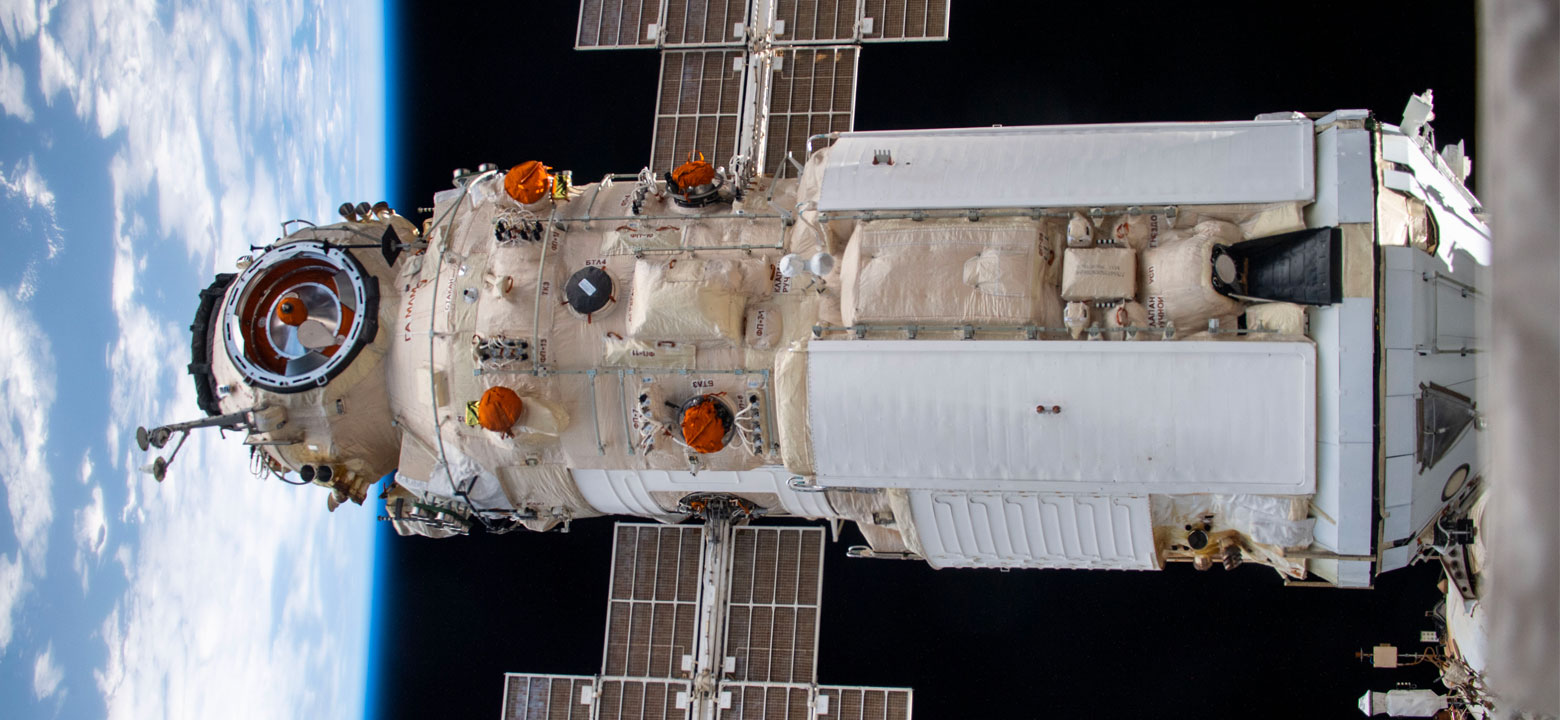
The International Space Station (ISS) recently had a frightening mishap. After the thrusters of a new module fired unexpectedly, the entire station was forced into a 540° flip. How did this happen, and just how serious is the situation?
On July 29th, a Russian research module called Nauka docked to the ISS. Just a few hours later, it unexpectedly began firing its thrusters. Under normal circumstances, these would allow the module to pull away and leave the station. These, however, were not normal circumstances.
Since the module was docked, the station and module commenced an incredibly powerful game of tug-of-war. Nauka's thrusters were attempting to push it away from the ISS, and the ISS still held the module firmly in place. The ISS has four gyroscopes that normally help it stay in position, but this was too much. The station performed a 540° backflip.
The ISS rotated one and a half times, at roughly one-half of a degree per second. When it was all over, the ISS was upside-down.
Experts currently think that a software glitch may have caused Nauka to activate its thrusters. It had experienced some minor software issues earlier on, and, the day after the thruster accident, Russian space agency Roscosmos issued an official statement blaming it on the module's software. The scary part here is that the thrusters couldn't immediately be turned off—Russian ground control commanded Nauka to stop firing, and it didn't. When a crew loses control over a spacecraft, however temporarily, that's a problem.
While the spin was slow enough for crewmembers not to notice, everything continued to operate normally, and nobody was in danger, the situation is still of major concern. As Jonathan McDowell, an astronomer at the Harvard-Smithsonian Center for Astrophysics stated, “When spacecraft misfire it's a serious thing.”
Unfortunately, things sometimes go wrong in space. Misfires can happen, despite all of the flight and ground crews' efforts to the contrary. Under different circumstances, this could have been disastrous—the major saving grace here is the sheer size of the ISS. Since it's incredibly heavy and roughly the size of a football field, Nauka's thrusters weren't able to make it spin very quickly. Had it been smaller and lighter, it could've been sent into a more rapid—and far more dangerous—spin.
That said, there are still some concerns. Getting the ISS properly oriented again required fuel. In space, fuel is incredibly precious. There's no easy way to replenish what the station was forced to waste. The ISS can be refueled, but it's expensive and difficult. This is still better than other pieces of equipment, which don't have a mechanism for refueling at all. Another spacecraft could've very well found itself stuck without any way to reposition itself.
Another concern is the station's age. It's over two decades old, and showing it. Even if it were newer, however, it was never designed to be an agile piece of equipment. There are components of the ISS that were never meant to handle the kind of forces placed on it by the flip, and, even if they were, age-related stressors would have already caused some of them to weaken as it is.
Space agencies know that both humans and machines are fallible. Software glitches, design flaws, and simple human errors happen. That's why things are set up with multiple layers of failsafes in place. If a mistake manages to slip through one department, it will likely be caught by another before it can cause a real issue.
Ultimately, this was a one in a million accident. Fortunately, as unlikely as it was to happen, it went as well as it possibly could. Had Nauka's thrusters activated as it was docking, it could've collided with the station and caused far more damage than it did. Had the ISS been more maneuverable, it could've been sent into a potentially deadly spin, or forced to collide with other objects in space. As it is, the station and its occupants are safe, and control crews are working to make sure a situation like this doesn't arise again.